Understanding Business Structure
A business structure refers to the legal and organizational framework that a business adopts to operate and conduct its activities. It determines how a company is organized, managed, and taxed, and it affects the owners’ personal liability level.
The most common types of business structures include sole proprietorships, partnerships, limited liability companies (LLCs), and corporations. Each system has its own advantages and disadvantages regarding liability protection, taxation, management, and ownership.
Selecting the proper business structure is crucial for the success of a business as it affects various aspects of its operations, legal obligations, and financial outcomes.
Choosing the Best Business Structure for Success
Choosing the best business structure for success involves evaluating several factors, such as your business goals, legal and tax considerations, management structure, and personal liability.

Here are some steps to guide you in selecting the optimal business structure:
Determine your business goals and long-term objectives.
Determining your business goals and long-term objectives is essential in selecting the best business structure for your company. By having a clear vision of what you want to achieve, you can identify the legal entity that best aligns with your objectives and helps you achieve them. When determining your business goals and long-term objectives, some factors include your target market, products or services, growth projections, revenue targets, and competitive advantage.
It’s also important to consider your personal goals, such as work-life balance, financial stability, and personal fulfillment. By taking the time to establish your business goals and long-term objectives, you can select a business structure that positions your company for success and helps you achieve your desired outcomes.
Evaluate the legal and tax implications of each business structure.
When evaluating the legal and tax implications of each business structure, it’s essential to consider the advantages and disadvantages of each type of entity. Here are some key factors to consider:
- Sole Proprietorship – Easy and inexpensive to set up, but the owner is personally liable for all business debts and obligations, and there is no legal separation between the business and the owner’s personal assets. They are taxed as personal income.
- Partnership – Easy and flexible to set up, but each partner is personally liable for all business debts and obligations. It is taxed as personal income.
- Limited Liability Company (LLC) – Offers personal liability protection and pass-through taxation, meaning that profits and losses are reported on the owner’s individual tax returns. Requires more paperwork and fees than a sole proprietorship or partnership.
- Corporation – Offers the most personal liability protection but involves more paperwork, fees, and formalities than other business structures. Taxed at the corporate level, and owners are also taxed on any dividends or salaries received.
Consider the management structure and decision-making process for each type of business entity.
When considering the management structure and decision-making process for each type of business entity, it’s crucial to think about how you want your business to be managed and who will be making critical decisions. Here are some key factors to consider:
- Sole Proprietorship – Managed solely by the owner, who has complete control over all aspects of the business.
- Partnership – Managed by the partners, who share responsibility for decision-making and management of the business.
- Limited Liability Company (LLC) – Managed by the owners, who may choose to operate the business themselves or hire professional managers. It may be managed by members or by managers appointed by members.
- Corporation – Managed by a board of directors, who the shareholders elect. Day-to-day management is delegated to officers appointed by the board.
Assess your personal liability and risk tolerance.
Assessing personal liability and risk tolerance is vital in choosing a business structure. Sole proprietors and partnerships have unlimited personal liability, while LLCs and corporations offer limited liability protection. Consider your risk tolerance and preference for control and administrative work when deciding. Consult with legal and financial professionals to make an informed choice.
Consult with legal and financial experts to make an informed decision.
Consulting with legal and financial experts is crucial to making an informed the decision when selecting a business structure. They can provide valuable guidance, help you understand the legal and tax implications of each design, and assist with the formation process. Their expertise can also help you avoid future legal and financial pitfalls. Feel free to seek their advice to ensure that you make the best choice for your business. Selecting the proper business structure is crucial to the success of your company. Following the steps outlined above, you can make an informed decision and position yourself for long-term success.
By first determining your business goals and long-term objectives, you can identify which business structure aligns best with your plans for growth and expansion. Evaluating each design’s legal and tax implications can help you understand the potential risks and benefits associated with each option.
Considering the management structure and decision-making process for each type of business entity can help you choose a design that aligns with your management style and business goals. Assessing your personal liability and risk tolerance is vital in selecting a structure that provides the right balance of protection and control for your business.
Lastly, consulting with legal and financial experts can provide valuable guidance and help you make an informed decision that considers all of the relevant legal and economic considerations.
By evaluating each of these factors carefully, you can make a well-informed decision about the best business structure for your company. This can position you for long-term success by providing you with the legal, financial, and operational framework necessary to achieve your business objectives.


